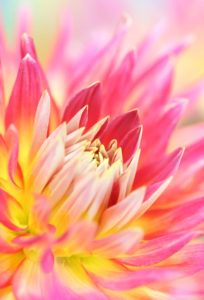 Is our culture one in which acts of loving-kindness are considered special gifts rather than everyday occurrences? We may have learned to carry an insect gently outdoors to freedom rather than brutally squishing it, but do we show that same tenderness to the one who cuts us off in traffic, or the adolescent who sees things differently?
Is our culture one in which acts of loving-kindness are considered special gifts rather than everyday occurrences? We may have learned to carry an insect gently outdoors to freedom rather than brutally squishing it, but do we show that same tenderness to the one who cuts us off in traffic, or the adolescent who sees things differently?
Ironically, although it appears that loving-kindness is something we give, or show to others, in reality it is an inner state of being. The outward manifestations are only a reflection of something much deeper. If we think of loving kindness as a series of actions that we carry out, then what of the space between those actions? Who are we in between?
When we create peace within, our outer actions flow effortlessly, almost without thought. When there is an ocean of peace within, our actions are soft waves gently lapping the shores of the consciousness of others. It is easy to be kind when we feel good. It is easier to be kind to those whom we love. The journey of loving-kindness requires not that we act in a kind, loving way, but rather that we be loving-kindness.
If we have a flashlight and decide to direct our light to areas we wish to illuminate, then we are trying to be like the sun. If we simply were able to turn on an inner radiant light, then everything in our presence would be illuminated. We would be a light source, rather than acting like one. Similarly, when we can be loving- kindness, anything or anyone encountering us receives the warm rays of kind energy: automatically, unmediated by thought.
The sun does not decide upon whom it will shine; nor does a loving heart. So how do we, in a fast-paced Western culture, live loving- kindness? The easy answer is to simply eliminate anything that does not feel kind or loving. That may be a little too heavy on the Zen, and too light on the practical, to induce action.
We come into the world with an unlimited capacity for giving and receiving love. The only reason for not functioning naturally in a loving way is because we have been hurt. Somewhere (or everywhere) along the line there has been hurt and subsequent defense formation. The natural response is to block the flow of love – to only give it to those we can trust. Thus love becomes a kind of currency: something to trade in.
We become the managers of our loving energy, rather than just being the loving energy ourselves. We want only to “spend” our love where we will get good value in return. We step out of the loving flow – and then yearn for fulfillment that we will never find out there. An attitude of loving-kindness begins first with compassion for oneself.
The love that we seek outside in the world we must first bring to ourselves. As we do this, we may feel humility, surrender and even some sorrow about how we have abandoned ourselves. It is keeping ourselves out of our own hearts that creates our pain. When we have separation within ourselves, to some degree we will maintain separation from others.
It is this separation that blocks the living expression of loving kindness. As we open our hearts to ourselves, we find there is room there for the entire world. When we cease judgement of ourselves, we no longer need to judge others. When we are compassionate and gentle to ourselves, it is natural to be that way with others.
In our increasingly technological world, we interact more and more with others via technology, rather than face to face. It is the human face, the smile, and the eyes, which trigger within the profoundness of the human connection. If the sun were human, it would be basking in its own warm glow, and as it looked beyond itself it would see only radiant light reflecting off of everything in its vision. So it is with us when we are manifestations of loving-kindness. We feel a deep warmth radiating from within and surrounding us. We see in everyone else the same reflection of love, a light that reflects back and forth endlessly, so that there is no separation between ‘ I’ and ‘thee’. Then, there is only love.
Copyright © Gwen Randall-Young, All Rights Reserved. Contact us if you would like permission to reprint.






